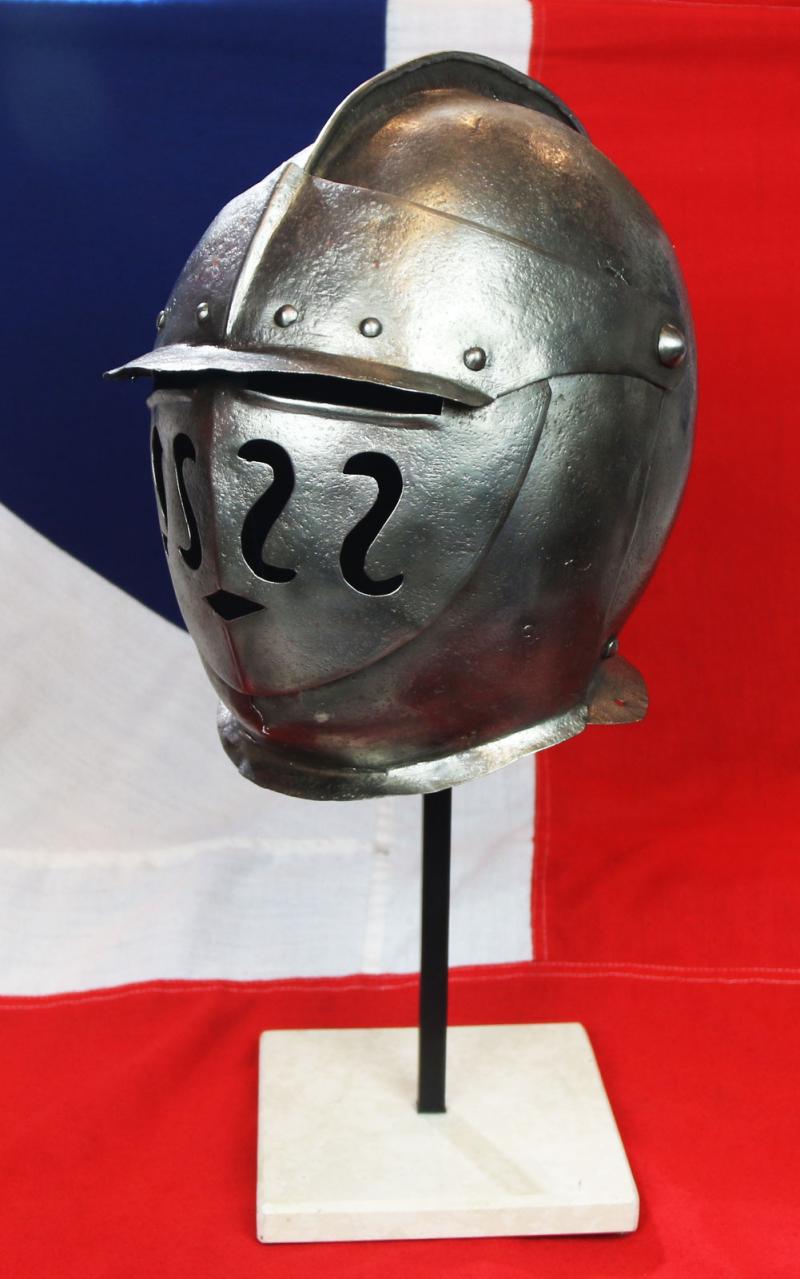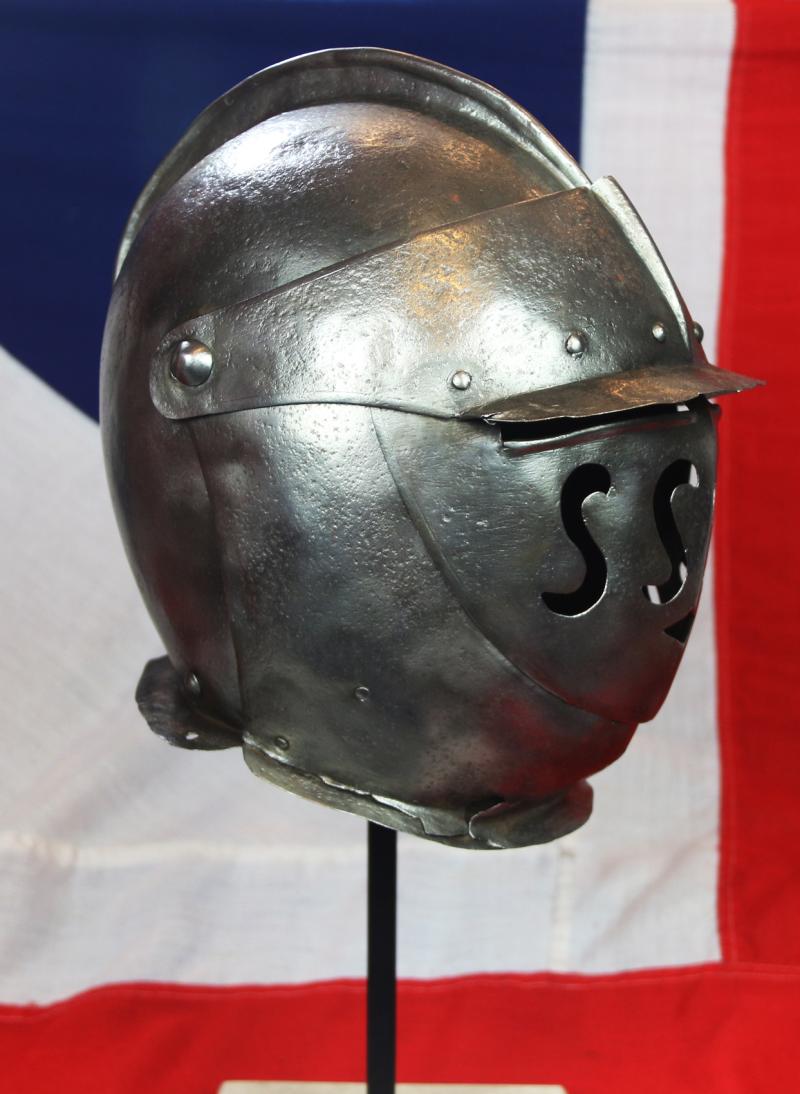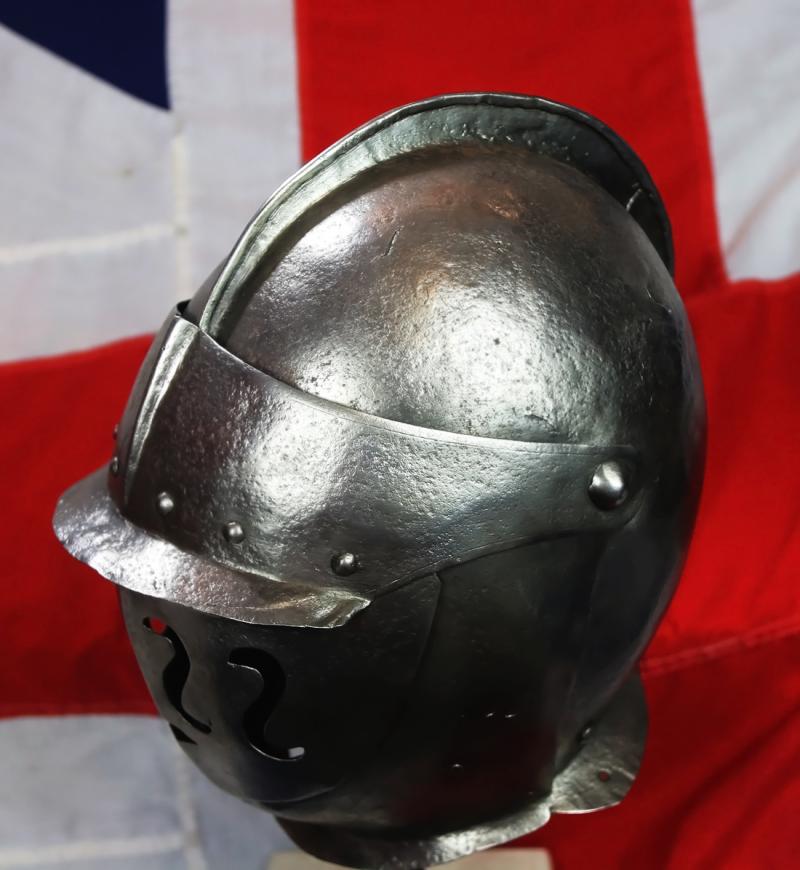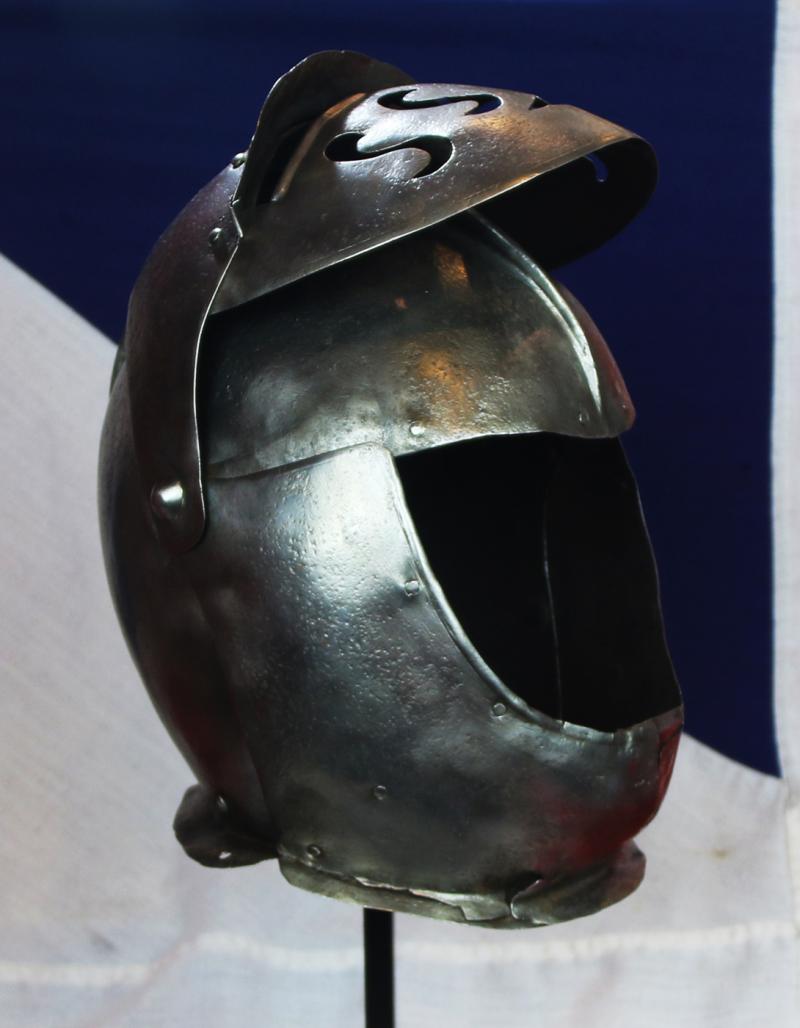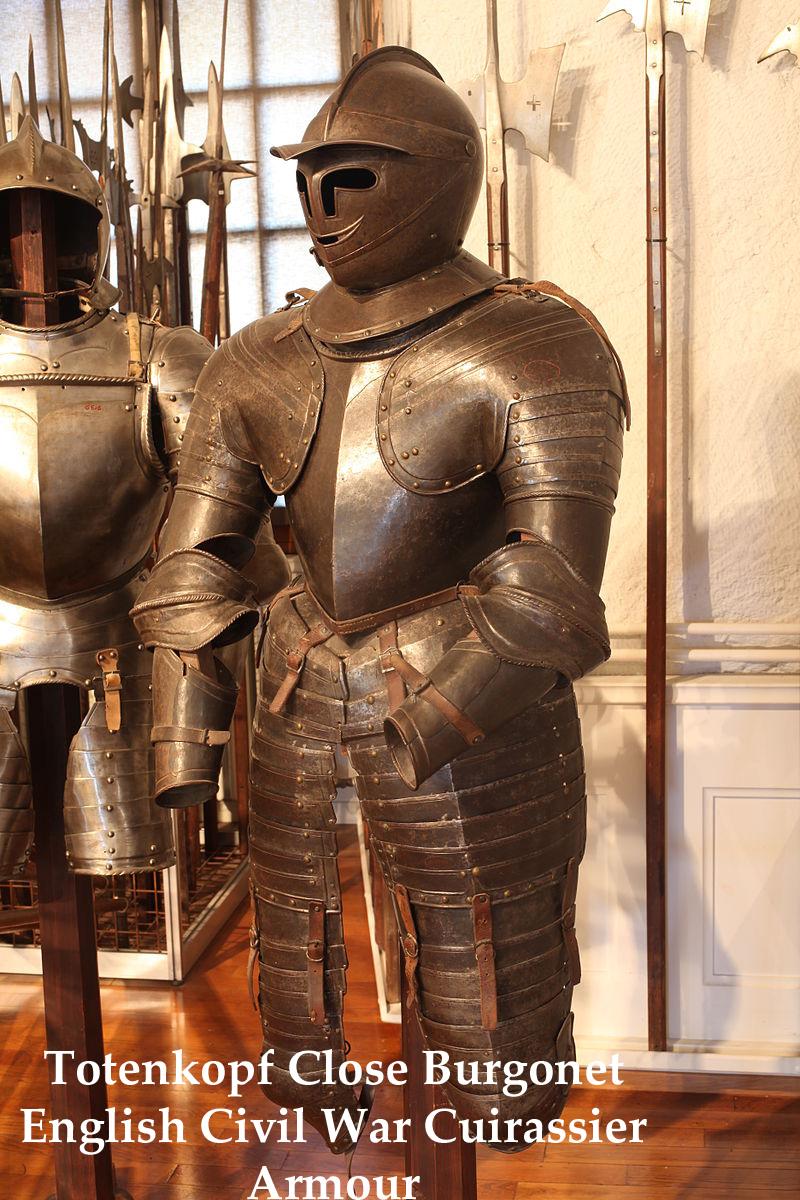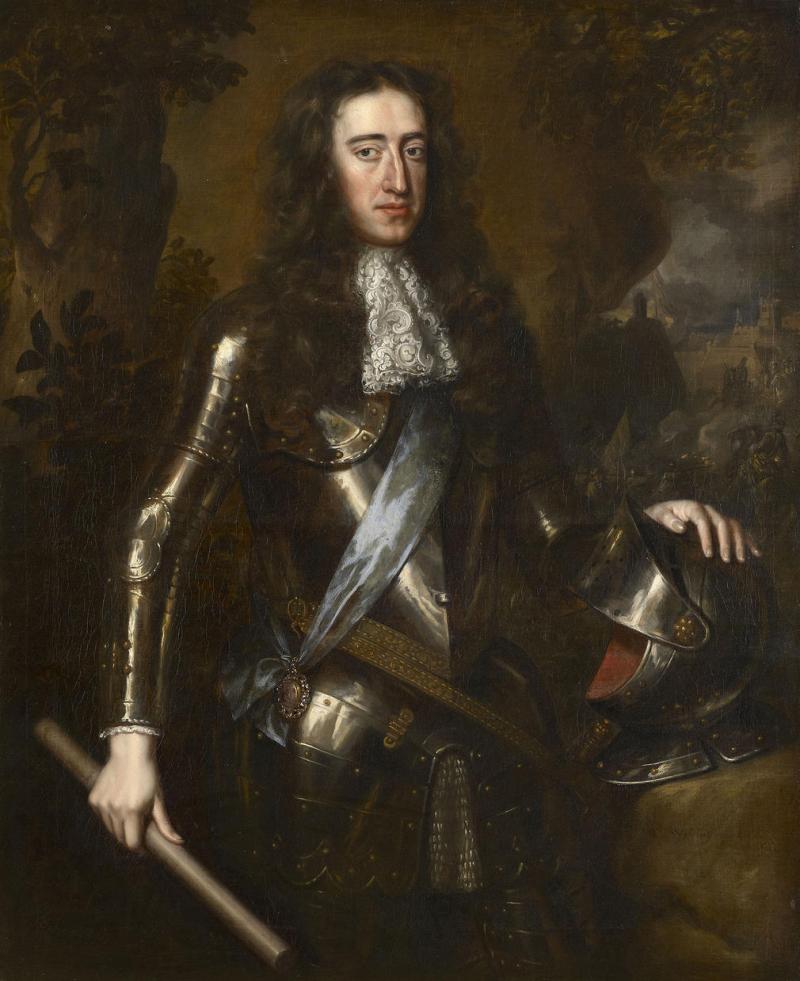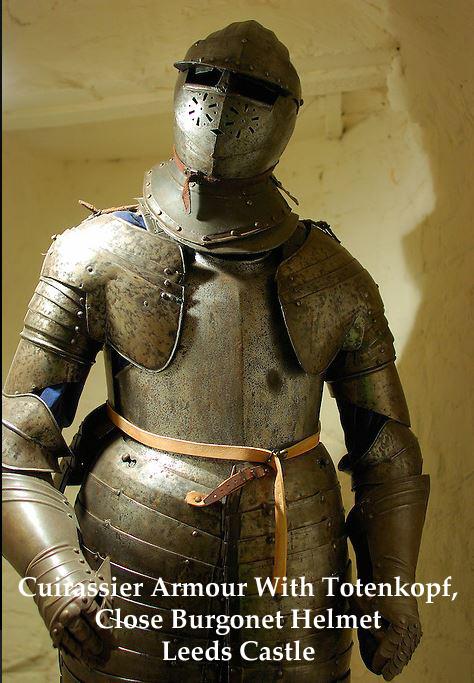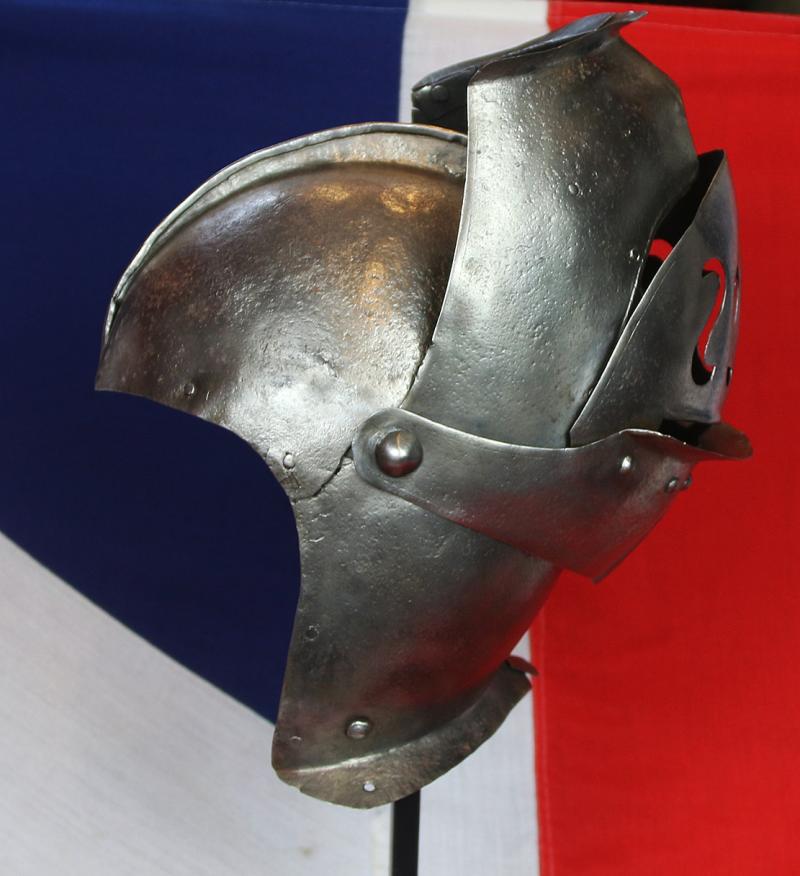A Fabulous, Circa 1600, Italian Made, Cuirassier's Heavy Cavalry 'Totenkopf' Close Burgonet Helmet. Used Up To The English Civil War Such as By Sir Arthur Haslerigge's 'London Lobster' Regiment
The London lobsters, Haselrigge's Lobsters or just "Lobsters" were the name given to the cavalry unit raised and led by Sir Arthur Haselrig, a Parliamentarian who fought in the English Civil War. The unit derived its name from the regiment being one of very few units raised as cuirassiers, equipped in suits of late 16th century plate armour, originally and likely imported from Italy or Germany, reaching from the head to the knee. Armed with swords or petronel pistols.
The regiment had a somewhat chequered career in combat, but was credited with being one of very few Parliamentarian cavalry units able to stand up to the mounted charge of the Cavaliers in the early years of the war.
At the Battle of Cheriton on 29 March 1644 the unit attacked a royalist regiment of infantry under Sir Henry Bard. Bard's unit had advanced towards the Parliamentary cavalry, but had moved too fast and were no longer in formation with the rest of the Royalist infantry. The Lobsters saw this and Haselrig led 300 of them against Bard's regiment. The royalist regiment was completely destroyed, with all the infantry either killed or taken prisoner. Parliament eventually won the battle
The term Savoyard helmet, a design of which the Totenkopf helmet is part of, is used today to evoke the helmets worn by elite armoured cavalry units formed by Charles Emanuel I, Duke of Savoy (1580-1630). Such helmets were designed principally to withstand and protect the wearer from shot from the powerful wheel-lock guns of the day, though their secondary function was to intimidate and terrify. The design of the helmet suggests a human face or skull. They were known as totenkopf or “death’s head” helmets in Germany. The helmet would have originally been associated with a three-quarter cuirassier armour. At the battle of Roundway Down, Sir Arthur Haslerigge led the only full cuirassier unit of the English Civil war. He was singled out by a more lightly equipped Royalist horseman who chased him down and shot him in the head twice. Both times, the Royalist made sure that he touched Haselrigge's helmet before firing and both shots did nothing except to cause Haslerigge to sway in his saddle (and perhaps suffer a headache and to change his pants). In the end, Haslerigge was tired out from trying to outride his pursuer (heat exhaustion), and surrendered only to be rescued by fellow Parliamentarian troopers.
Judging by how Haslerigge survived two shots at point blank to the head, you can understand why firing pistols then charging with a lance would not work. You would be too far for the pistols to be effective and too close to build up enough momentum in your charge to use a lance.
Comprising a full face shield with broad S shaped bars, and a traditional so-called totenkopf 'deaths head' type design, with small mouth opening, A wide hinged visor; the visor and the front face section of the helmet swivel upwards to enable fitting comfortably on to the head. The helmet has a crown with a tall ridge running from front to back, with the early style small collar for protecting the neck. The burgonet was the last form of full head protective steel helmet, worn in combat in Europe, that most often than not had no face protection at the front, but the rarer form, called the close burgonet, and also the Totenkopf, had the traditional ‘raise and lower’ twin section full face armour, such as this beautiful and rare example.
It was during the mid to late 1500s that cuirassiers as the word is commonly used started to evolve (in other words, fully-armoured cavalrymen with pistols.) The cuirassier was the successor to the lancer; thus, he was really most effective as a shock troop. The early use of mounted gunfire in 16th century Europe took the form of the "caracole" formation, which was basically this: a square of cuirassiers would advance towards the enemy and then the first row would ride to within 20 or 30 yards of the enemy and fire one pistol and then the other, then ride to the back of the formation to reload; the next row would do the same; and so on and so on.
Code: 24921
6650.00 GBP

